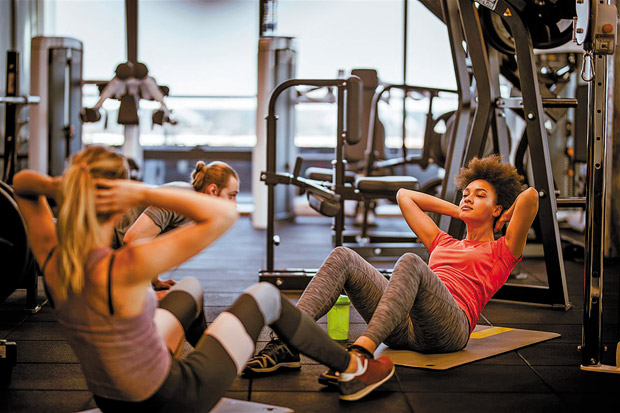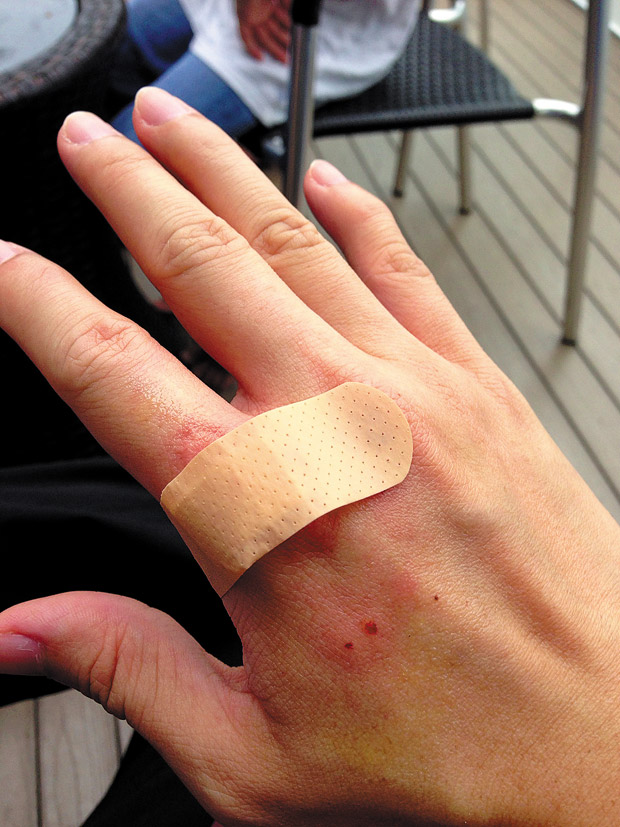As we head into the start of a new year, we tend to be in closer quarters indoors and constantly around friends and family. It is important to be conscious of infectious diseases, such as Methicillin-resistant Staphylococcus aureus (MRSA), which is spreading rapidly among public places like gyms and schools. MRSA prevention should continue at home, especially for groups at higher risk, like student athletes.
MRSA is one common superbug that can be potentially deadly. Caused by a type of Staph bacteria often found on the skin and in the nose, MRSA is easily spread by skin-to-skin contact or touching contaminated items or surfaces. It is also resistant to many antibiotics, making it difficult to treat. According to the Centers for
Disease Control and Prevention (CDC), it is estimated that there are an alarming 72,444 infections and 9,194 MRSA-related deaths each year in the U.S. alone.
“In 2000, I had ankle surgery and ended up infected with the antibiotic-resistant bacteria MRSA. The infection spread to my bone marrow and bloodstream and required many surgeries and rehabilitation,” said Jeanine Thomas, MRSA survivor and founder of MRSA Survivors Network. “Since then I have been dedicated to advocating for patients and families to help inform them and bring awareness of the disease and prevention measures to the general public.”
Taking simple measures at home and on-the-go can help you to protect and safeguard your health, environment and family from dangerous bacteria and viruses, including MRSA, this season.
Clorox teamed up with Thomas, former NFL player Brandon Noble, who has been personally affected by MRSA, and Saskia V. Popescu, MPH, MA, CIC, hospital epidemiologist and infection preventionist, to share the following expert tips:
• Wash your hands frequently with soap and warm water for at least 15 seconds — the time it takes to sing Happy Birthday twice — or use an alcohol-based hand sanitizer. “It’s important to stay vigilant with hand hygiene,” said Popescu. Be extra cautious in public settings like gyms, locker rooms, households and schools, where these viruses are increasingly spreading.
• Keep to yourself and do not share personal items, such as towels or razors, which contact bare skin. MRSA is easily spread by skin-to-skin contact or touching contaminated items or surfaces. It is also resistant to many antibiotics, making it difficult to treat.
• Act fast and take care of cuts and open wounds by covering them up with a clean, dry bandage until healed.
Seek a medical professional if the wound worsens or doesn’t heal quickly. “When I contracted MRSA, it changed my life. I had no idea such a disease existed and would pose as a threat to my career, health and overall well-being,” said Noble.
• Use a barrier, such as a towel or clothing, between skin and shared equipment at the gym. MRSA prevention should continue at home, especially for groups at higher risk like student athletes, as MRSA bacteria can remain on surfaces after someone touches them, making it possible for someone else to pick them up.
• Regularly clean counter-tops and other surfaces in your home. “Keeping your germs at bay in the kitchen is easy,” said Thomas. “Just mix one-half cup bleach with one gallon of water, wipe surfaces and leave solution on for 5 minutes and then rinse.”
The CDC recommends disinfecting surfaces which are likely to come in contact with skin with an EPA-registered disinfectant, like Clorox Regular Bleach with CLOROMAX.
“I wish I had known the simple ways to prevent the spread of this disease, like I do now, as that could have made all the difference,” said Noble.
As germs and illnesses spread quickly, especially in close proximity areas, taking proactive steps to prevent common viruses and bacteria from spreading in the home, at schools and locker rooms is more important than ever to help protect our health, family and community.
Learn more on how to prevent the spread of viruses and bacteria, such as MRSA, at Clorox.com.
This article is courtesy of Brandpoint.



